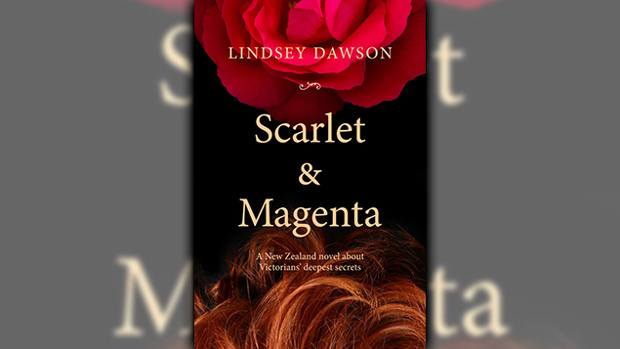Stephanie Jones: Book Review - Scarlet and Magenta by Lindsey Dawson
- Publish Date
- Friday, 9 September 2016, 12:37PM

It’s early colonial times in the rugged Bay of Plenty, and the struggle is real. In Lindsey’s Dawson’s exuberant Scarlet & Magenta – her first historical novel, but you’d never know it – the wives are repressed and their men oppressed; by their banker overlords, by the drink, by the noxious cloud of Christian piety that hangs over the new colony.
“Scandal. Blood. Anguish. Rage. Revenge. Grief.” Anna Hamilton’s reflection on a tumultuous few months in the rugged new settlement of Tauranga 25 years earlier neatly summarizes Dawson’s heady plot, which centres on an illicit love affair between the married Violet Sutton and the reckless bachelor Rupert Beckford. The story was inspired by a drama in Dawson’s own family and embellished by the author’s fecund imagination, as Anna and her husband Thomas, the manager of a Bank of New Zealand outpost that rivals Rupert’s local National Bank branch, are caught in the middle of an entirely dangerous liaison.
Violet is a glorious character, sympathetic and courageous and a woman pitifully out of time. All but sold into her marriage to the brutish Henry Sutton after giving birth illegitimately in England, she has been brought to New Zealand as her husband feeds his greed with colonial opportunism and she privately longs for news of her son. A subscriber to the Freethinker movement, Violet would scandalize her new friend Anna were the latter not desperate for some fun of her own, and Anna accompanies Violet on such daring adventures as rowing a boat, trouser-wearing and dancing.
Anna, also the mother of a young son, is a New Zealand resident of only eight years and has a more forgiving eye than her husband, who was born in the colony and raised by a missionary father to whom he has to account for a glass of ale he has at hand while counselling his friend. Try as he might, the moderate Thomas cannot save flame-haired Rupert – the ‘Magenta Man’ who falls for Violet’s scarlet woman – from his worst instincts in a town seen by churchmen as a rising “den of iniquity . . . with its bars and unseemly roistering.”
Amid the thrill of story Dawson shapes a lucid view of women and an emerging biculturalism. For white women with professional husbands life was still drudgery and childbearing fraught with danger. Anna’s maid Dinah, who rejects any notion that she will ever leave her turangawaewae, offers her mistress a lesson in tikanga: “My mokopuna will know my name. But you British people, you come and go . . . You are like stones skipping on water, never belonging. We are here forever.” Her prediction is borne out.
After the Sturm und Drangof the novel’s first two-thirds, the third act slows, the timeline jumping forward, first by a couple of years and then again by many. The more languid pace, the backward glances and closure of unfinished business by the survivors, provoke nostalgia and melancholy. As the stressful graft of the bankers foreshadowed, the boom times in Tauranga were not to last, the after-effects of the Tarawera eruption – vividly re-enacted here – contributing to the Depression of the 1890s.
Dawson’s writing is supremely smooth and her dialogue a joy, in careful conversations between proper women over tea and in moments of high emotion, as when Rupert is condemned by the cuckolded Henry Sutton as an “impudent masher”. Scarlet & Magenta is that rare historical novel that feels rooted in its time and place, and a lively fictional companion to the ancient family letters from which it originated.
Take your Radio, Podcasts and Music with you

